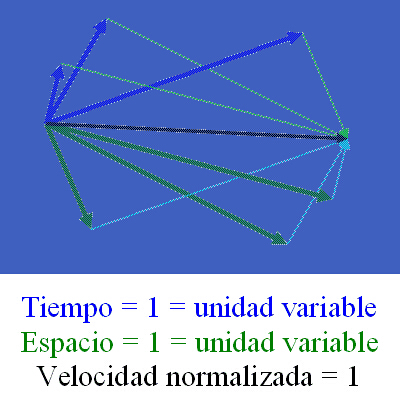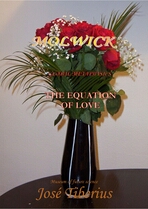1.b) Physical magnitudes and units
The concept of physical quantities is essential for the understanding of models of reality. According to Wikipedia, a physical magnitude is nothing more than a property or characteristic of bodies; logically, the word body will cover any manifestation of physical reality.
Now, some physical quantities represent an abstraction in themselves; one can think of a theoretical space without the need for a body to occupy it. Likewise, the notion of the passage of time does not need a specific reality, either.
Consequently, the separation between the concept of physical magnitude and its application to reality is not so clear, especially with the current definition of the units of space and time in the context of Modern Physics.
This section and the fundamental constants one have an impact on the meaning of the types of units and physical magnitudes and extraordinary relationships between the main constants and their units, respectively, since the constants imply an equivalence relation between the units of the involved quantities.
Both points help to understand the different types of experiments. The first one analyzes the theoretical point of view, and the second one, the complexity of the units and magnitudes of a real case.
The interpretation of the definition of the units of the magnitudes is essential because, without the intuitive elucidation, it is difficult to move forward.
The constants included in the formulas or definitions of specific quantities imply a unit transformation relationship between the defined unit and the rest of the equation. However, the constants do not usually have a unit value because they respond to a historical criterion or a more practical quantitative scale.
If a physical constant is not constant, its definition has not taken into account all the independent variables that affect it.
A simple example, Newton’s gravity has as physical units (m/s²), but it can also be with (N/kg). The first refers to the effect or acceleration that will occur, the second to the cause or force per unit mass that will produce the gravitational acceleration indicated.
A third one would be (N m/kg m), the energy per unit of mass and space, something similar to the energy per unit of the mass-space continuum. It is somewhat funny, but the mass-space continuum sounds like the unbreakable characteristic of the reticular structure of matter or Global Aether.
Having said that, although they seem different ways of reading a formula, they are not so disparate, they may refer to the cause, the effect, or a property of a material system or just to an imaginary reality, but all of them are true.
For example, when saying two men per horse, or two meters per second, we all have an intuitive idea of its meaning. It is simple if we multiply in the first case by three horses, then we will have six men.
2 (men / horse) * 3 horses = 6 men
However, if we multiply the previous result by three horses, we will have 18 horse-men, that is, 18 minotaur. This unit is no longer so intuitive; it is a new element with the properties of man and horse. If we had to represent this new concept, we would do it with a little drawing.
6 men * 3 horses = 18 minotaur
The example above illustrates what Wikipedia calls fundamental and derived magnitudes.
By dividing one unit of magnitude by another, we are quantifying it as a unit function of another element or virtual container; that is, establishing a transformation equivalence between physical units. On the contrary, if we multiply that something by a different one, we are adding a property to it or qualitatively configuring it.
However, the meaning will depend on the initial magnitude dimensions and the concepts with which it is operating; the opposite could be the case.

As an example, one Newton for each kilogram (N/kg) implies both the properties of a Newton and kilogram continue to exist. On the contrary, a Newton * meter will be a new something that will have the properties of force and the first spatial dimension, that is, the physical magnitude energy, and we will call the unit Julio.
The opposite example would be if we divide the energy by space; in this case, it would give us the force. Note that we are using abstract concepts with a more complex meaning than it may appear at first glance.
Concerning units and dimensions in Modern Physics, there are two main types of problems:
Physical magnitudes with variable units
The definition of non-constant units for a magnitude represents to lose their physical meaning, hides reality, and complicates logical reasoning.
Variable units imply the abstraction of physical magnitude itself changes. It would be desirable to keep the inferences in the definition to allow coherent reasoning.
Relative definitions of fundamental units of the International System of Units or Measures affect most of the derived units.
It is necessary an effort to translate the information provided by Modern Physics in relative units to non-relative units to try to understand the reality. For example, to know how speed changes when talking about variations in time within the Theory of Relativity.
Physical dimensions outside of physical reality
This strange phenomenon occurs regularly with the physical magnitudes of the geometry of space. Both Relativity and Quantum Mechanics introduce additional types of dimensions to the Euclidean space, even if they have to bend a little bit their meaning or they go to another world, like the branch of Quantum Mechanics of the Many or Multiple Worlds.
Therefore, the interpretation of many experiments is very complicated, especially when it comes to measurements and aspects not fully understood.
Sometimes, it can help to do a free reading of scientific texts. For instance, when there are properties that disappear and appear from nowhere, to think they refer to a transformation of Global Aether properties.
* * *
